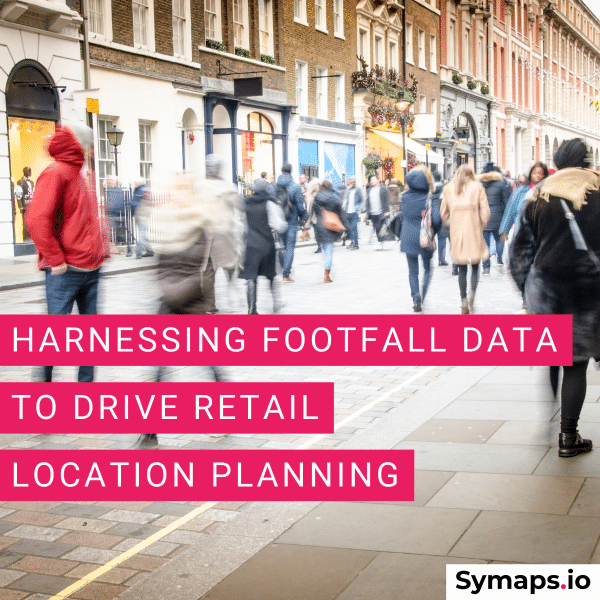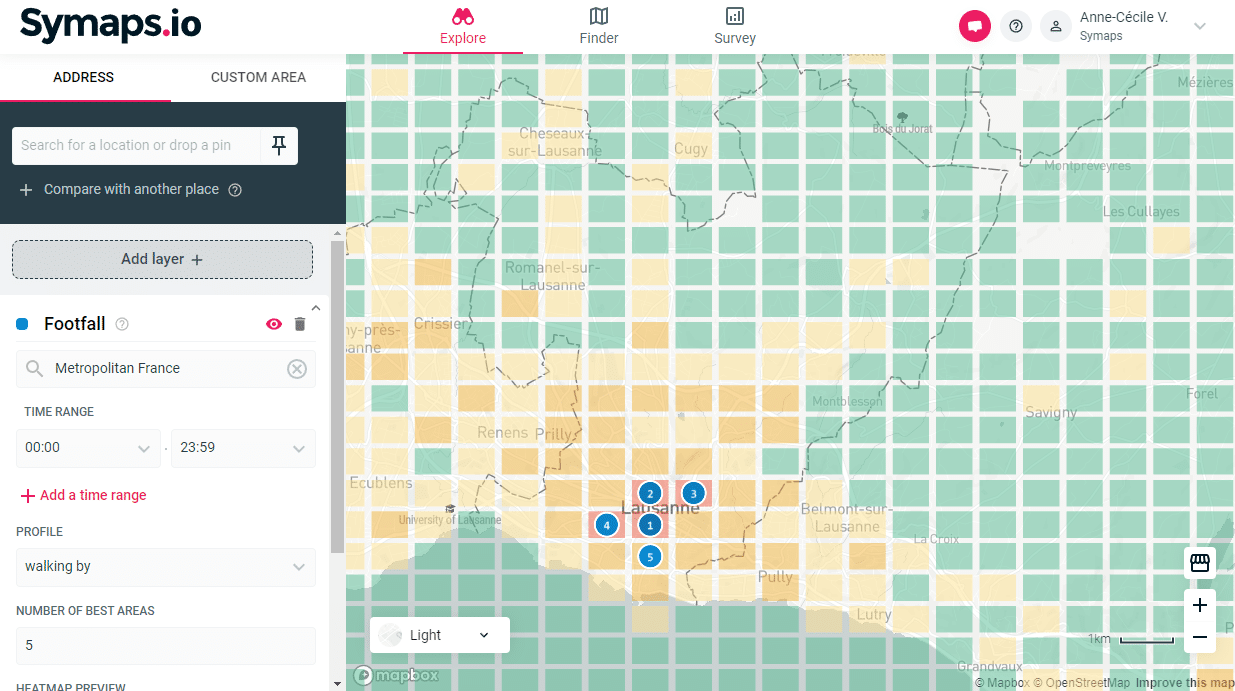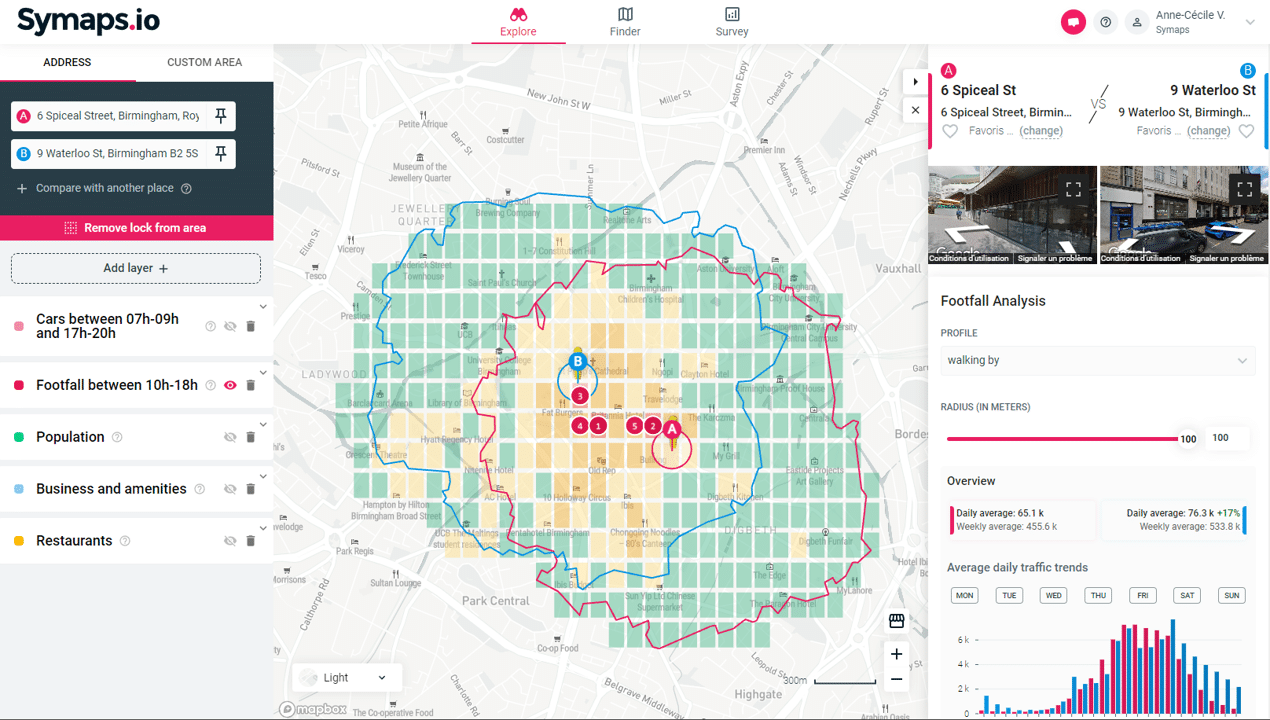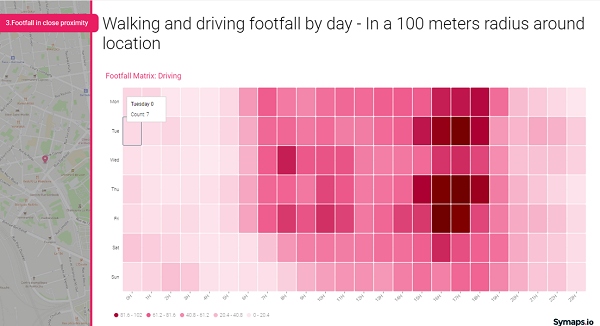Harnessing Footfall Data to Drive Retail Location Planning
In today’s competitive retail landscape, making informed decisions about where to open new stores or expand existing locations is crucial for success. Harnessing footfall data has become an essential tool, providing valuable insights into customer behavior and preferences.
This powerful data source can help you identify prime locations, optimize store layouts, and tailor marketing campaigns to maximize profitability.
We could write many things regarding footfall data, we chose to focus here on the challenges, analysis techniques, and practical applications, empowering you to leverage this game-changing resource for strategic retail location planning.

Challenges in Footfall Data Analysis
A. Ensuring data accuracy, consistency, and integrating multiple data sources
Footfall data can be collected from various sources, including manual counting, video cameras, Wi-Fi tracking, in-store sensors, and mobile phone applications.
One of the primary challenges in footfall data analysis is ensuring accuracy and consistency, which are crucial for deriving valuable insights and making informed decisions. Factors affecting data accuracy and consistency include the quality and reliability of the data collection methods, the calibration and maintenance of data collection devices or the representativeness of the sample population.
In addition to accuracy and consistency, integrating data from multiple sources can be challenging due to differences in data formats, collection frequencies, and quality. Effective data integration requires time and internal collaboration to ensure seamless data merging and alignment with business objectives and other KPIs.
Regularly validating footfall data against external benchmarks, such as industry reports or third-party studies, can help businesses maintain a high level of data quality and trustworthiness.
To mitigate these issues, businesses can benefit from partnering with a location intelligence platform like Symaps, which integrates various sources of geolocalised data, such as demographics, business and amenities, and more. With a location intelligence platform, compatibility and consistency of data are taken care of, allowing you to focus on extracting valuable insights and making informed decisions. By leveraging a comprehensive data ecosystem, businesses can seamlessly combine footfall data with other relevant datasets, driving strategic growth and optimization.
B. Navigating data privacy and ethical considerations in analysis
Data privacy is a critical aspect of footfall data analysis, particularly when data is collected from personal devices such as mobile phones or Wi-Fi tracking.
While the allure of highly detailed footfall data with precise information on people’s origins and destinations may be enticing, delving into these details raises GDPR and data privacy concerns. Overly intrusive tracking is not only problematic from a regulatory standpoint but, let’s be honest, nobody wants that.
Accurate location analysis can be achieved respecting ethical considerations by cross-referencing footfall with other types of geolocalised data, such as the presence of other brands and amenities in the area. Location intelligence platforms, like Symaps, offer these capabilities, enabling businesses to gain valuable insights while adhering to data privacy regulations and ethical standards.
C. Balancing granularity and data volume in analysis
Collecting highly granular footfall data can provide valuable insights but may also lead to an overwhelming volume of data to process and analyze. Businesses must strike a balance between the level of detail in the data and the resources required to manage and analyze it. To optimize data granularity, you should consider factors such as the specific insights you seek, the data processing capabilities of your systems, and the time and resources available for data analysis.

Example: A business seeking footfall data to inform their decision-making might require information at different time intervals: every minute, every hour, or daily. Receiving data collected every minute would offer the most detailed insights into customer movement patterns but could lead to an overwhelming amount of data to store and process. Conversely, obtaining daily data would significantly reduce the data volume but might not capture crucial variations in footfall throughout the day. In this scenario, the business could consider opting for hourly data, striking a balance between the need for detailed insights and manageable data volumes.
Advanced Footfall Data Analysis Techniques
A. Integrating Footfall Data with Other Data Sources for Comprehensive Insights
Combining footfall data with other data sources, such as sales, population, and local events, can provide a more comprehensive understanding of store performance and customer behavior. Integrating these data sources can reveal relationships between footfall patterns and external factors, enabling businesses to make more informed decisions and better adapt to changing conditions.

B. Geospatial and Temporal Analysis for Location-Based Insights
Geospatial analysis involves examining footfall data in the context of geographic locations and spatial relationships. This technique can help businesses understand regional variations in footfall, identify hotspots and underperforming areas, and inform location-based strategies. Temporal analysis, on the other hand, focuses on the timing of footfall data, allowing businesses to identify trends, seasonality, and periodic fluctuations in pedestrian traffic.

C. Machine learning and predictive modeling
Machine learning algorithms and predictive modeling help identify patterns, correlations, and trends in footfall data that may not be immediately apparent through traditional data analysis methods. By leveraging machine learning techniques, it is possible to forecast future footfall patterns, estimate the impact of marketing campaigns or store changes, and optimize resource allocation.
Looking to uncover hidden opportunities?
- Let’s talk about it 30 minutes by phone
- Our team will show you how to apply predictive modeling to your business
- You get personnalised recommendations for your brand
4. Practical Applications of Footfall Data in Retail Location Planning
A. Identifying Prime Locations for New Stores or Expansions
Footfall data can help businesses identify high-traffic areas with the potential for successful new store locations or expansions. By analyzing footfall patterns, you can pinpoint areas with a strong customer presence, ensuring that your new stores are optimally positioned to attract visitors and drive sales.

B. Optimizing Store Layouts and Merchandising Strategies
By understanding footfall patterns within a store, businesses can optimize store layouts and merchandising strategies to maximize customer engagement and sales. This can involve rearranging store sections, placing high-margin products in high-traffic areas, or adjusting the layout to encourage customers to explore the store more thoroughly.
C. Tailoring Marketing Campaigns to Specific Customer Segments
By analyzing footfall data, businesses can identify specific customer segments that frequent their stores or a particular area. This information can be used to create targeted marketing campaigns that cater to the preferences and needs of each group. For example, a store might find that a large percentage of its footfall comes from young professionals during weekday lunch hours. Based on this insight, the store could create a marketing campaign promoting a lunchtime special or limited-time offer tailored to this demographic.
D. Assessing Store Performance and Identifying Areas for Improvement
Footfall data can be invaluable in evaluating the performance of individual stores or entire retail chains. By comparing footfall data across locations, businesses can identify underperforming stores, assess the reasons behind their low footfall, and take steps to improve performance. Additionally, businesses can compare footfall data with sales data to identify any discrepancies, such as a high footfall store with low sales, indicating potential issues in store layout or customer service.

On this map, the color of the dots corresponds to the theoretical performance of each touchpoint, and the color of the halo to the actual results, according to three categories of performance: low (orange), intermediate (blue) and high (green). This makes it possible to quickly identify outlets that are performing better than the predicted potential and those that are under-performing.
5. Geomarketing tools
There are a variety of geomarketing tools available, including:
– Geolocation tools
Tools that enable businesses to target customers based on their location, such as GPS and Wi-Fi.
– Mapping and visualization tools
Tools that allow businesses to visualize and analyze geographic data, such as heat maps and demographic maps.
– Data analysis tools
Tools that enable businesses to analyze and interpret geodata, such as marketing analytics software and business intelligence tools.
Conclusion
Harnessing the power of footfall data can have a significant impact on retail location planning and overall business success. By overcoming the challenges in data analysis, applying advanced techniques, and implementing practical applications of footfall data, businesses can make informed decisions about store locations, optimize store layouts, and create targeted marketing campaigns. Embracing footfall data as a valuable resource for strategic decision-making can help businesses stay ahead in the competitive retail landscape.
Is your network perfectly optimised?
- Let’s talk about it 30 minutes by phone
- Our team can help you analyse the market and your current coverage in your chosen area
- You get personnalised recommendations on 5 different location criteria
Share post
